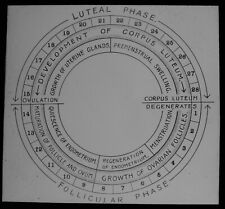
It has long been recognized that women’s preferences for masculine men change throughout their menstrual cycle, but a new study from the Kinsey Institute pinpoints the areas of the brain that change around ovulation and reveals how these changes affect both sensory discrimination and risk processing. The study, published in Evolution and Human Behavior, sheds light on the link between women’s hormone levels and their brain responses to masculinized versus feminized male faces, potentially offering insights into female mate preferences.
“One area of the brain in which we observed a difference in activation in response to masculinized versus feminized faces – specifically during the follicular phase – was the anterior cingulate cortex, which is a region involved in decision-making and the evaluation of potential reward and risk,” said neuroscientist Heather Rupp, a research fellow at the Kinsey Institute. “Activation in this region has been previously reported to correlate with ‘high risk’ nonsocial choices, specifically monetary risk, so it is interesting that it is observed to be more active in response to masculinized male faces, who may be both riskier but more rewarding to women.”
Around the time of ovulation, a female’s preference apparently shifts from avoiding negligent parenting to acquiring the best genes for her offspring. At other points during the cycle, women will prefer more feminized male faces, as they might signal a higher willingness of the males to invest in offspring.
Rupp explored the link between hormone levels and brain responses to male faces by masculinizing or feminizing pictures of 56 male faces and showing them to heterosexual women during the follicular phase (closer to ovulation) and the luteal phases of their menstrual cycles. While brain activity was measured using functional Magnetic Resonance Imaging, women viewed the masculinized and feminized male faces, indicating their interest in the man depicted as a potential sexual partner.
Rupp found differences in brain regions related to face perception, decision making and reward processing that responded more strongly to masculinized than feminized faces, suggesting that “neural activation in response to face stimuli is sensitive to facial masculinization, even in the absence of differences in subjective ratings.” Differences between masculinized and feminized faces appeared strongest during the follicular phase, closer to ovulation, noted Rupp.
Related:
Contraceptive Pill Threatening Genetic Diversity?
Sexual Success And The Schizoid Factor
High testosterone drives risky investments
Angry Looks Trigger Reward Circuits
Chemosignal Unlocks Sexual Desire In Women


















Comments are closed.